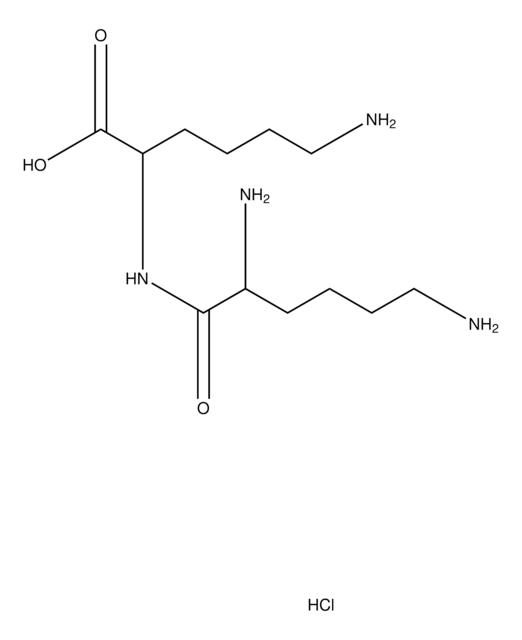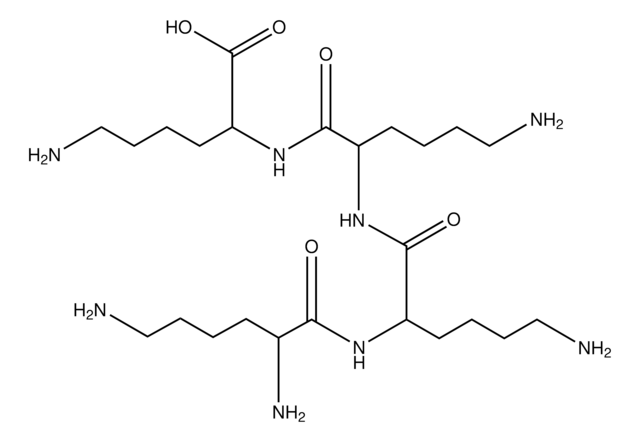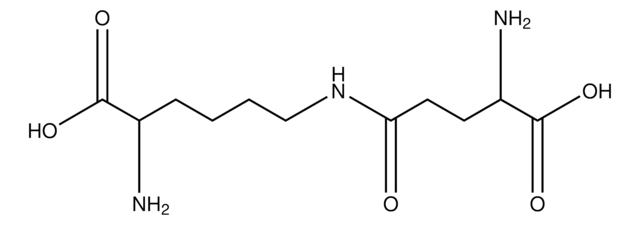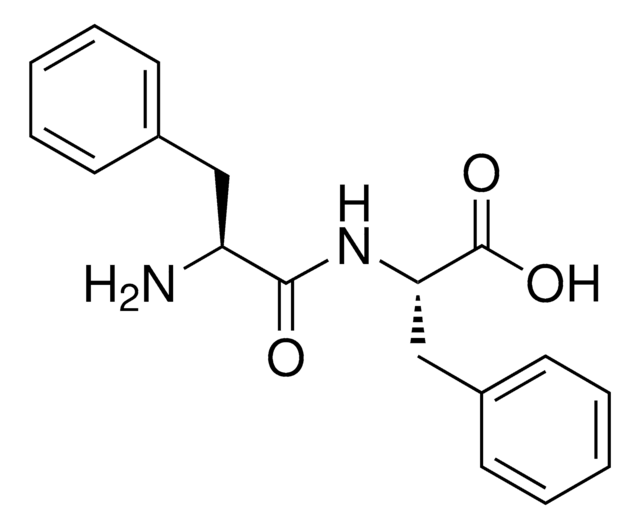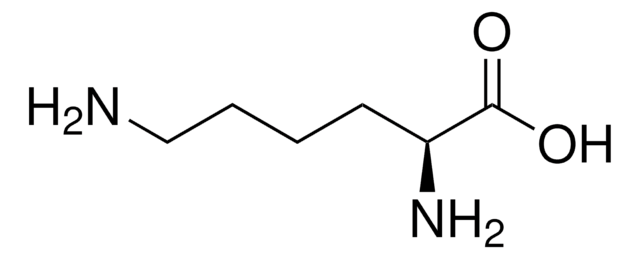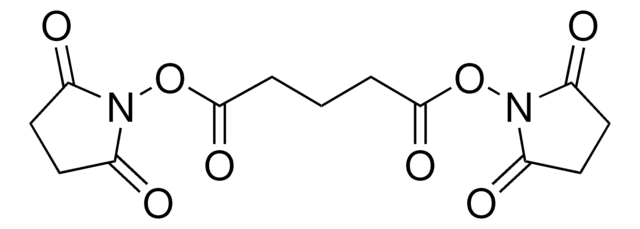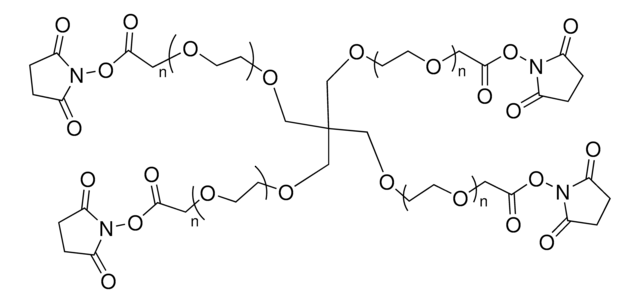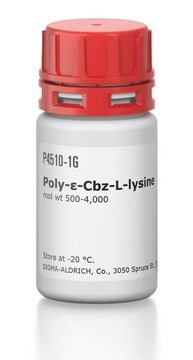Wszystkie zdjęcia(1)
Kluczowe dokumenty
L8901
Lys-Lys-Lys
≥97% (TLC)
Synonim(y):
Trilysine
Zaloguj sięWyświetlanie cen organizacyjnych i kontraktowych
About This Item
Wzór empiryczny (zapis Hilla):
C18H38N6O4
Numer CAS:
Masa cząsteczkowa:
402.53
Numer MDL:
Kod UNSPSC:
12352209
Identyfikator substancji w PubChem:
NACRES:
NA.26
Polecane produkty
Nazwa produktu
Lys-Lys-Lys, ≥97% (TLC)
Próba
≥97% (TLC)
Formularz
powder
skład
Peptide content, ~60%
kolor
white to off-white
temp. przechowywania
−20°C
ciąg SMILES
NCCCCC(N)C(=O)NC(CCCCN)C(=O)NC(CCCCN)C(O)=O
InChI
1S/C18H38N6O4/c19-10-4-1-7-13(22)16(25)23-14(8-2-5-11-20)17(26)24-15(18(27)28)9-3-6-12-21/h13-15H,1-12,19-22H2,(H,23,25)(H,24,26)(H,27,28)
Klucz InChI
WBSCNDJQPKSPII-UHFFFAOYSA-N
Amino Acid Sequence
Lys-Lys-Lys
Zastosowanie
Short poly-L-lysines polypeptides such as trilysine (tri-L-lysine, lys3); tetralysine (tetra-L-lysine, lys4) and pentalysine (penta-L-lysine, lys5) are cationic moieties that may be used in the construction of gene delivery vectors and DNA nanoparticles.
Opakowanie
Bottomless glass bottle. Contents are inside inserted fused cone.
Ta strona może zawierać tekst przetłumaczony maszynowo.
Kod klasy składowania
11 - Combustible Solids
Klasa zagrożenia wodnego (WGK)
WGK 3
Temperatura zapłonu (°F)
Not applicable
Temperatura zapłonu (°C)
Not applicable
Środki ochrony indywidualnej
Eyeshields, Gloves, type N95 (US)
Wybierz jedną z najnowszych wersji:
Masz już ten produkt?
Dokumenty związane z niedawno zakupionymi produktami zostały zamieszczone w Bibliotece dokumentów.
Klienci oglądali również te produkty
Aboli A Rane et al.
PloS one, 6(6), e21571-e21571 (2011-07-07)
Several injectable materials have been shown to preserve or improve cardiac function as well as prevent or slow left ventricular (LV) remodeling post-myocardial infarction (MI). However, it is unclear as to whether it is the structural support or the bioactivity
Peter G Millili et al.
Microscopy research and technique, 73(9), 866-877 (2010-03-17)
Polycationic polymers have been used to condense therapeutic DNA into submicron particles, offering protection from shear-induced or enzymatic degradation. However, the spontaneous nature of this self-assembly process gives rise to the formation of multimolecular aggregates, resulting in significant polyplex heterogeneity.
Sandrine Perrier et al.
Journal of the American Chemical Society, 128(17), 5703-5710 (2006-04-28)
Formation of DNA-protein cross-links involving the initial formation of a guanine radical cation was investigated. For this purpose, riboflavin-mediated photosensitization of a TGT oligonucleotide in aerated aqueous solution in the presence of the KKK tripeptide was performed. We have shown
Yudan Ma et al.
Chemistry (Weinheim an der Bergstrasse, Germany), 15(47), 13135-13140 (2009-10-27)
Single-strand oligo-DNA-modified Au nanoparticles (AuNPs) undergo aggregation in the presence of poly(L-lysine) (PLL), which is attributed to the interactions between the oligo-DNA and PLL. These interactions between the oligo-DNA and PLL were identified to be electrostatic when the lysine residues
Fang Zong et al.
PloS one, 4(10), e7346-e7346 (2009-10-06)
Syndecan-1 forms complexes with growth factors and their cognate receptors in the cell membrane. We have previously reported a tubulin-mediated translocation of syndecan-1 to the nucleus. The transport route and functional significance of nuclear syndecan-1 is still incompletely understood. Here
Nasz zespół naukowców ma doświadczenie we wszystkich obszarach badań, w tym w naukach przyrodniczych, materiałoznawstwie, syntezie chemicznej, chromatografii, analityce i wielu innych dziedzinach.
Skontaktuj się z zespołem ds. pomocy technicznej
